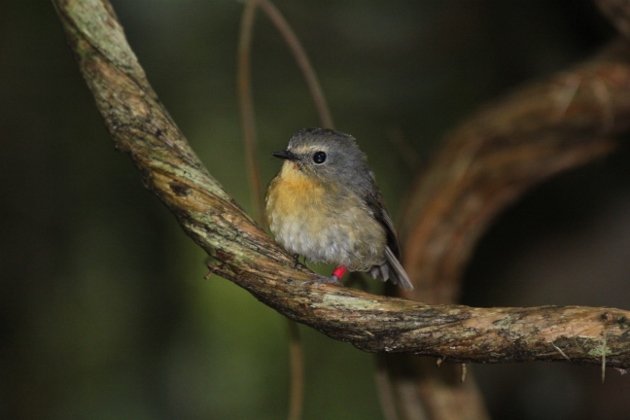
Mt Kinabalu is the one of destinations that birders visiting Borneo shouldn’t miss. It may not be the easiest place to bird (although it certainly isn’t the worst), and doesn’t have anything like the luxurious lodge found in Danum Valley, but there isn’t anywhere better to get the range of montane endemics of this fabulous island.
This doesn’t mean that it is particularly easy to find them, mind, so you may want to give the place a few days. And prepare yourself for certain disappointment, because you will not see all the possible species that you read about in the trip reports you read a dozen times before you left (when you should have been working). Many of the birds you might want to see are rare and dispersed, and I’ve never been anywhere where the birds make themselves quite so aggressively scarce after the first few hours of light. So, get there early,and learn the calls, put in the hours, and you should see something that makes you happy.
The dips
I managed to miss the big three, the Whitehead’s trio. Whitehead’s Trogon, Whitehead’s Broadbill and Whitehead’s Spiderhunter, in descending order of agony. I really tried for the trogon. I mean really. I’m fairly sure I haven’t tried that hard for any other bird ever before. I certainly won’t again. Maybe. I’ve never had a nemesis before, but this one managed to get that honour.
The other big dip was the Friendly Bush-warbler, but that wasn’t so much a dip as a couldn’t be bothered. It, apparently, isn’t too hard to find, if you feel inclined to take on the incline and climb to near the top of Mt Kinabalu. That’s a lot of work for a small LBJ, even one as interesting as a species restricted to just this island, and I didn’t feel the inclination. Besides, I had a trogon to find….
I dipped on a handful of other species, mostly babblers, obscure and skulky thrushes and the Wreathed Hornbill. I feel that the White-browed Shortwing also merits a mention. I heard it, and thus counted it, but I couldn’t for the life of me ever find one with my eyes. This bird isn’t rare, but it isn’t of a mind to show itself much either.
And now, with the disappointments out of the way, on to the good stuff.
The hits
Bornean Green Magpie. One of the species that was high on my list, and the one that made me wait the longest for it. The green magpies are among of the finest members of the jay and crow family (up there with the neotropical Green Jays), but like their relatives in Peninsular Malaysia they make you work for it.
Bornean Treepie. The other endemic corvid you’ll find here isn’t rare, but it doesn’t seem particularly brave either, and I never got great looks at them. Still, a fun bird.
Black-sided Flowerpecker. This tiny endemic won’t give you much trouble either, I saw plenty of them. It’s hard to have much to say about flowerpeckers, they are generally as pretty as they are small, and that’s about as much as anyone knows about any of them.
Pale-faced Bulbul. A pretty endemic species found way up the mountain. I managed to see it twice, and was unable to record it in eBird because, well, I guess the folks at eBird were too busy deciding whether to split and relump the Yellow-rumped Warbler for the millionth time to seriously revise the taxonomy of Bornean birds.
Woodpeckers. There aren’t many woodpeckers on Mt Kinabalu, I managed to see the Maroon Woodpecker, a species I also seemed to see everywhere else on Borneo and thus is probably best described as ubiquitous, and the Orange-backed Woodpecker, which is a very striking bird and one of my favourite birds for this site.
Sunda Bush-warbler. This is the bush-warbler you don’t have to climb the mountain for! Still best located up near the end of the road though, high up. Easy to locate because it is both loud and confiding, at a pinch you could see one of these and then just tell people you saw a Friendly Bush-warbler. (I mean, sure, they are a different family. But they’re LBJs! Who cares?)
Velvet-fronted Nuthatch. Imagine a normal nuthatch that went to clown college. The bright red bill and bright blue plumage makes it clear you aren’t in the temperate areas anymore, although I can’t hazard a guess as to what velvet-fronted refers to. Not spectacularly common, but I saw a few.
Bornean Stubtail. A very tiny bird with a tiny call that is probably beyond your hearing if you are over 40. Like the White-browed Shortwing I heard lots and didn’t see any, at least until I caved and used some playback (I’m a bad birder, I know. I also can’t tell the gulls apart, nor do I care about that, and have no intention of ever going to a birding festival, since I’m confessing birding sins).
Golden-naped Barbet. Pray that you get one of these early on so that you can quit worrying. Because otherwise the monotonous and inescapable calls will drive you nuts as you try in vain to locate it. They are everywhere and nowhere. I managed to see some close up in a fruiting tree.
Black-capped White-eye – Weirdly I never saw any of these when I had a guide to show me birds, but found them fairly easily when I cam back later. Goes to show that birds on Mt Kinabalu are rather unpredictable.
Chestnut-crested Yuhnia – This white-eye illustrates the above point as well, it was ubiquitous to the point of boredom, and going by trip reports usually is, but my guide told me he’d actually had a visit of a few days where it hadn’t been seen once. Anyway, this species never actually did become boring as it is hard to dislike a highly social and cheerful little white-eye, especially as it was my first ever yuhnia, indeed my first white-eye ever that wasn’t a Zosterops, and a Bornean endemic to boot.
Mountain Black-eye – This was the hardest white-eye to find, I only found a few once with the help of a guide high up the mountain. If you climb up the mountain in search of the infernal Friendly Bush-warblers it is apparently very common though.
Bornean Swiftlet – Like all the swifts and swiftlets on Borneo this species is essentially unidentifiable on the wing. It’s rare and probably endangered, so shooting swifts to identify the remains is frowned upon. Fortunately there are a handful nesting on a rocky face on the side of the road, so have a quick look at these nests, long enough to see a bird, then move on, having safely ticked it, to more interesting birds. It’s an easy, painless tick, so don’t spoil it by actually looking at the bird, it will only bother them.
Grey Nightjar – This migrant is the only nightjar you’ll see high up the mountain, and happily it is easy to see if you are driving up the road just before dawn. It can usually be found near the lookout spot. I was pleased to see it, not only was it a lifer, but it was also the first nightjar I’d seen in almost a decade.
Peregrine Falcon – Across most of Borneo the Peregrine Falcons you’ll see are wintering migrants, but here you’ll maybe see the local montane race, which is resident. I’m kinda curious how many countries I can see this most cosmopolitan of species in. Before some taxonomist gets bored and splits them like a chef dicing onions. I saw one here, while watching a Giant Squirrel no less. Thank god for momentary clear skies!
Bornean Whistling-thrush – This isn’t actually a thrush, its a big flycatcher-chat sort of thing. Personally, I still haven’t adjusted to the chats and robins and wheatears being split from the thrushes and lumped with the flycatchers. Anyway, this not-a-thrush is fairly easy to find early in the morning along the road. There also seemed to be one nesting near the cafe near the botanical gardens, I saw one several times while having lunch. So if you need this species, have lunch. It’s cheap as, and tasty.
Crimson-headed Partridge – There are lots of these around, and like the Golden-naped Barbet you’ll hear them a lot. I only managed to see them once, but they were worth it, a stunning looking bird. I also managed one sighting of the other endemic, the Red-breasted Partridge, but I didn’t hear that species very often at all.
Flycatchers – There are plenty of these on Kinabalu, from the ubiquitous and confiding Snowy-browed Flycatcher to the endemic but rather hard to find Eyebrowed Jungle-flyctacher, which I only managed to see once (but was, at least, confiding as well). The Indigo Flycatcher is another endemic, and an easy one to find, mercifully, and you’ll be happy about that as it’s a looker too. The Little Pied Flycatcher is present, but much more rare that it is in similar highlands in Peninsular Malaysia. Finally, keep your eyes open if you head there in winter, as you can pick up a range of migrants, including the Asian Brown Flyctacher (perfect for homesick Americans longing for a drab and uninteresting brown flycatcher that is hard to distinguish from congeneric relatives), the compact and attractive Mugimaki Flycatcher (actually very similar to the Snowy-browed) and the Blue-and-white Flyctacher, a species that is supposed to be rare but I saw a couple of times.
Meet the flockers
Quite a few of the species you’ll see on Kinabalu are found in mixed species flocks. While the exact composition of the flocks varies, there are two main themes, what could be called the big and little flock.
The little flocks are dominated by the smaller species, although they are dominated by the large Ochraceous Bulbul. The little flocks usually have plenty of fast moving Yellow-breasted Warblers, a decidedly undrab member of the Old World warbler assemblage that wouldn’t look out of place among New World wood-warblers. You’ll also find White-throated Fantails, Grey-throated Babbler, and the Bornean Whistler. This species is a timely reminder that Borneo is near Wallace’s Line, the boundary between the Oriental and Australian faunal kingdoms, and that species from Australian families do turn up here.
The big flocks are dominated by the loud, social and numerous laughingthrushes. The Chestnut-hooded Laughingthrush is the more common of the three species, and one of the prettier endemic species. The Sunda Laughingthrush isn’t an endemic but since the only other place you’ll see it is Sumatra it’s still something special. (There is a third laughingthrush but I didn’t see it so won’t discuss it out of pique). These flocks were often joined by Hair-crested Drongos and Black-and-crimson Oriole, which are proper orioles, not some silly American kind, and sometimes even squirrels.
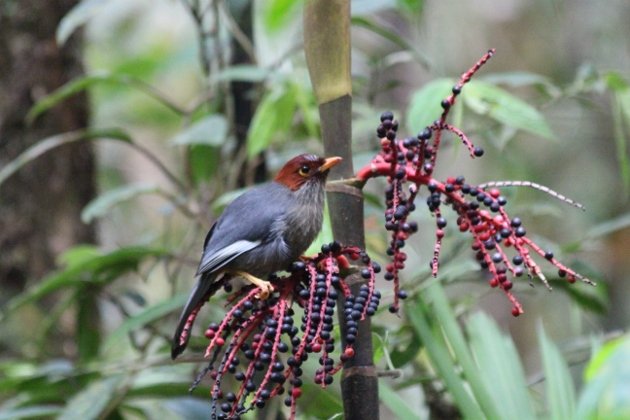 Chestnut-hooded Laughingthrush
Chestnut-hooded Laughingthrush
There were other birds present as well, from Grey-chinned Minivets to Mountain Serpent-eagles. But you’re probably tired now, so this is a good place to end. Hopefully this has given you the desire to come here, but be warned, that bloody trogon will break your heart if you do.


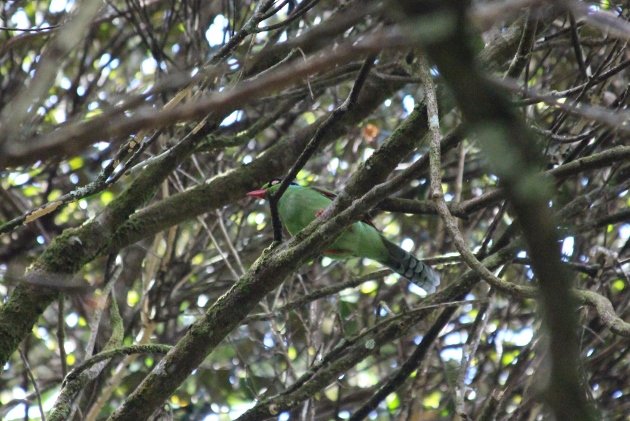
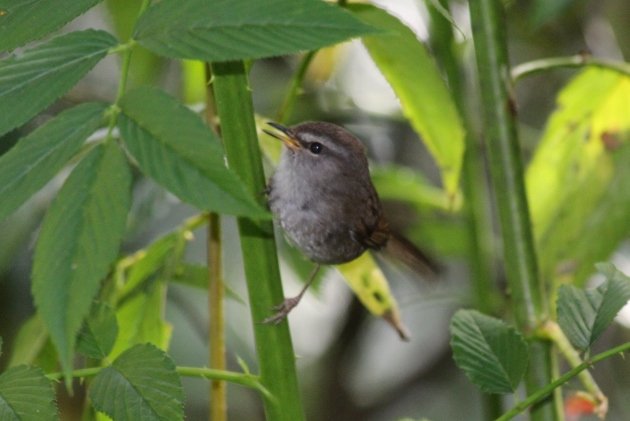
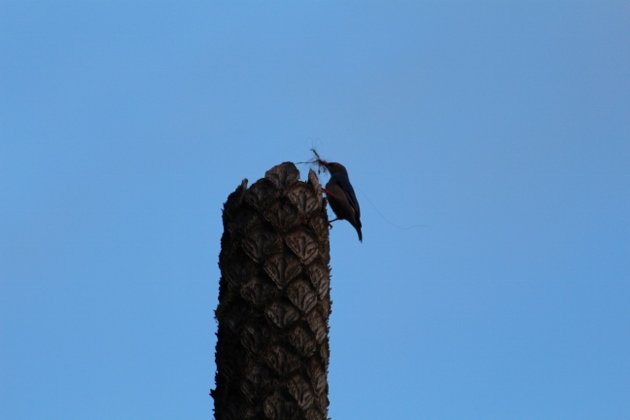
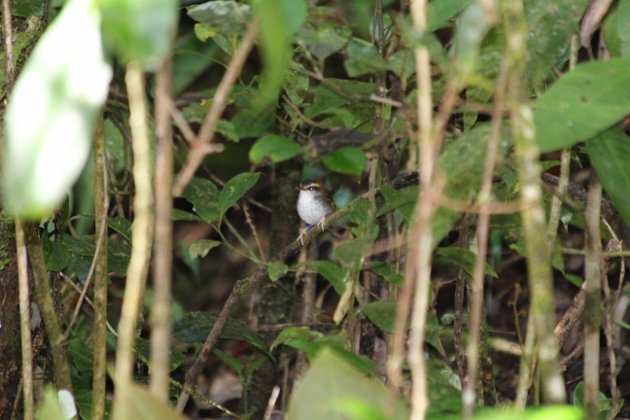
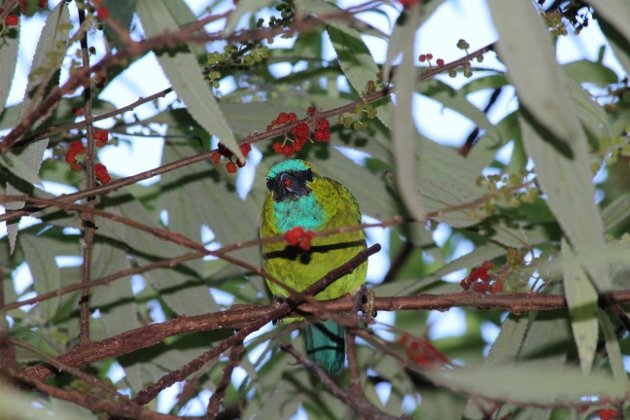
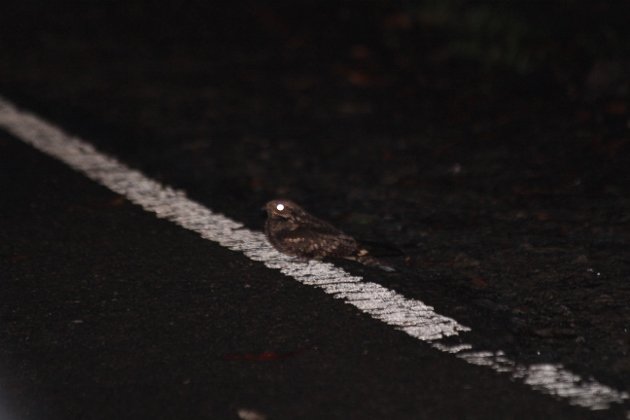

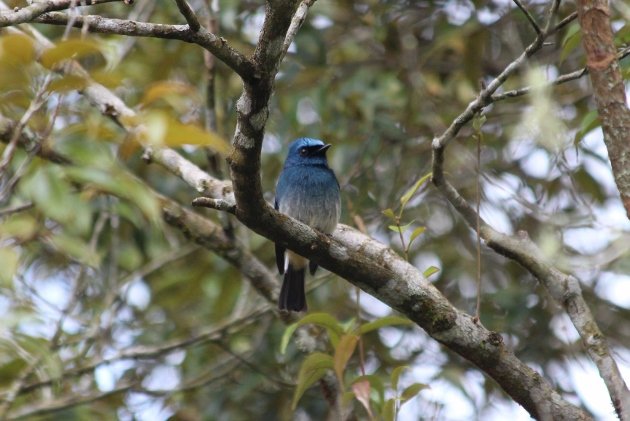

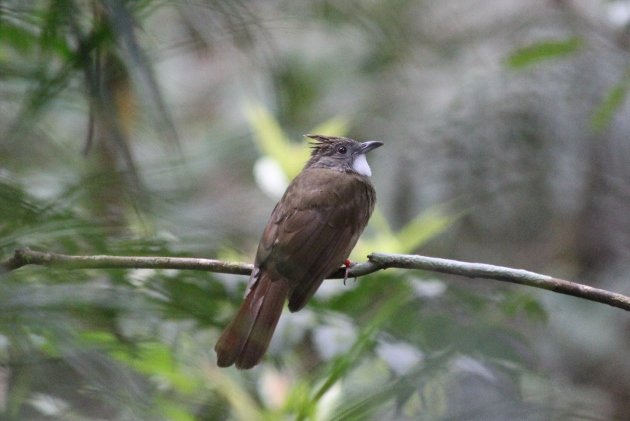
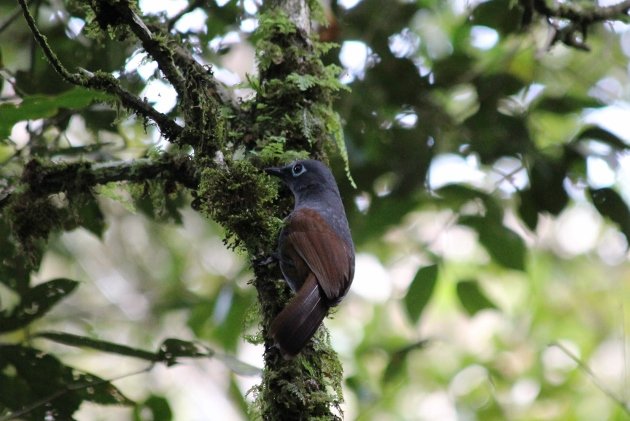










Leave a Comment